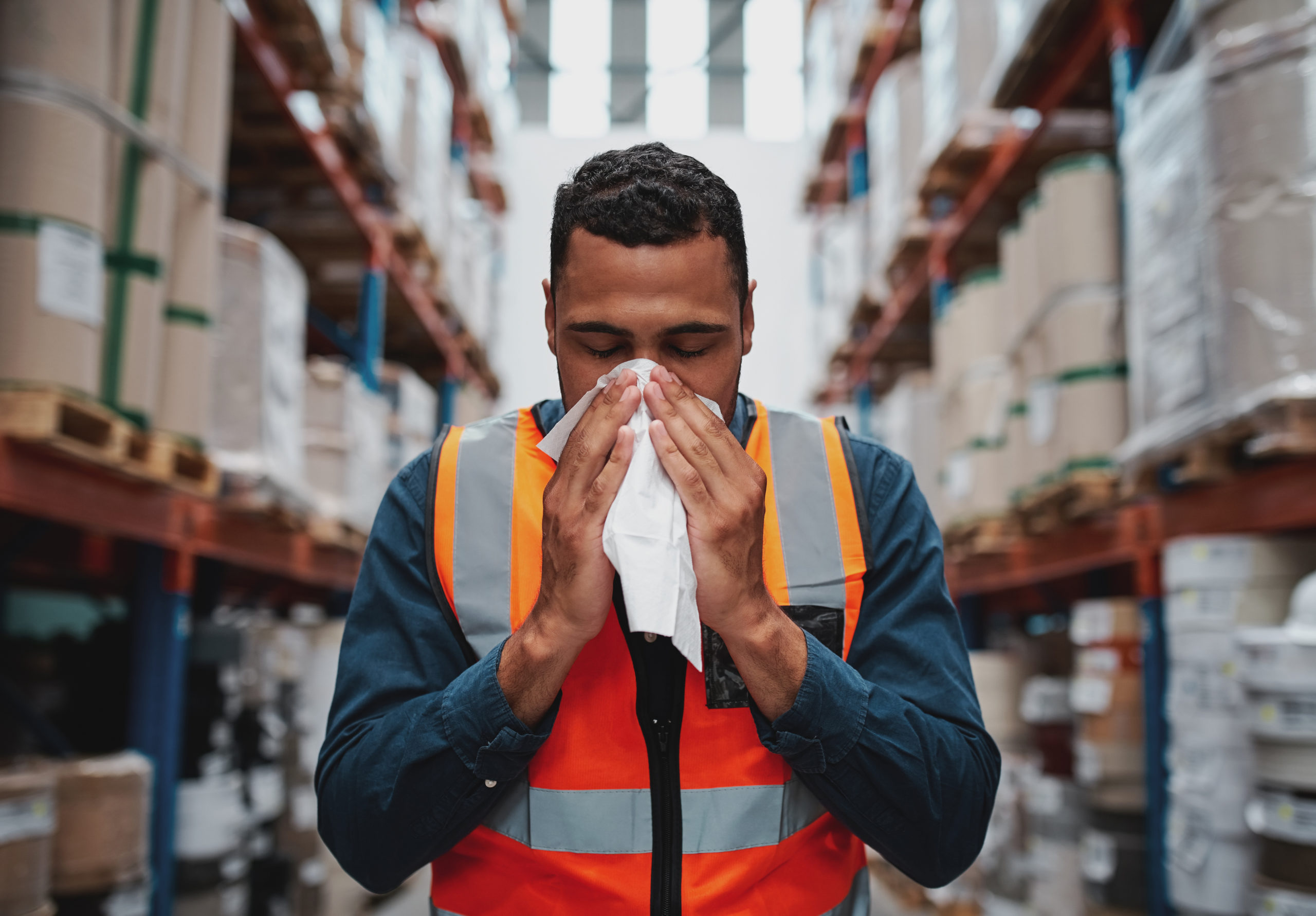The year 2020/21 was certainly a challenging one thanks to the ongoing pandemic, and its continued presence has affected the collection of data for the Health and Safety Executive’s (HSE) annual report on health & safety statistics for the workplace.
However, the information that has been collected has still revealed that COVID-19 has had an influential role on rates of work-related sickness and injury, as well as taking a toll on the mental health of workers.
Work-related ill health in 2020/21
In the years running up to the onset of COVID-19, rates of work-related illness had been broadly flat. However, in 2020/21, the HSE has revealed that the figure has crept up to 1.7 million, 850,000 of which were due to a new illness.
Although identifying the source of exposure is extremely difficult, COVID-19 is likely to have contributed to this total with 93,000 workers suffering with the virus after seemingly contracting it while at work.
COVID-19 was also reported to have caused or exacerbated other work-related illnesses, with 70% of the 645,000 workers in this category saying that it had affected their stress, depression or anxiety and 13% reporting that it had affected a work-related musculoskeletal disorder.
With the virus linked to worsening mental health, it is unsurprising that stress, depression and anxiety remain the leading causes of work-related ill health in 2020/21. Over the year, 822,000 workers were experiencing work-related stress, depression or anxiety, representing 50% of all workplace illnesses. Worryingly, 451,000 were new cases for this year.
Industries that are particularly at risk include public administration/defence, human health/social work and education, which all had higher than average rates of mental ill health.
Injuries in the workplace
Fatal injuries in 2020/21 crept up to 142 deaths over the year, an increase on the record low of 111 recorded in 2019/20.
In terms of non-fatal cases, 0.4 million workers sustained an injury while at work in 2020/21, with slips, trips and falls remaining the  leading cause (33%). This was followed by heavy lifting (18%) and being struck by a moving object (10%).
leading cause (33%). This was followed by heavy lifting (18%) and being struck by a moving object (10%).
Of the 441,000 workers who sustained an injury, 339,000 resulted in up to seven days’ absence from work, while 102,000 injuries led to workers taking more than seven days off work.
Disrupted working and an increase in homeworking during the worst parts of the pandemic have, however, seen the total of workers with self-reported workplace injuries drop sharply from pre-COVID levels, where the total sat at 0.7 million in 2019/20.
Agriculture, forestry and fishing remains the most dangerous industry to work in, followed by construction and the accommodation and food service industries.
Keep your workers happy, healthy and safe
Creating a robust system of processes that work to identify, control and mitigate risks to your workers can help to make your workplace a safer, healthier and happier place. This will help to reduce workplace absences, boost morale and protect the reputation of your organisation.
As the international Standard for occupational health & safety, ISO 45001 can show that you put health & safety first. By implementing the ISO, you can create a system based on best practice, which can reduce the likelihood of accidents, illnesses and any breaches of legislation.
There is also now a new Standard, ISO 45003, which is specifically designed to control psychosocial risks in the workplace and support your workers’ mental health and well-being. It works perfectly with ISO 45001 or as a standalone product.
To find out more, you can get in touch with our experts on 0333 344 3646 or by emailing [email protected].

